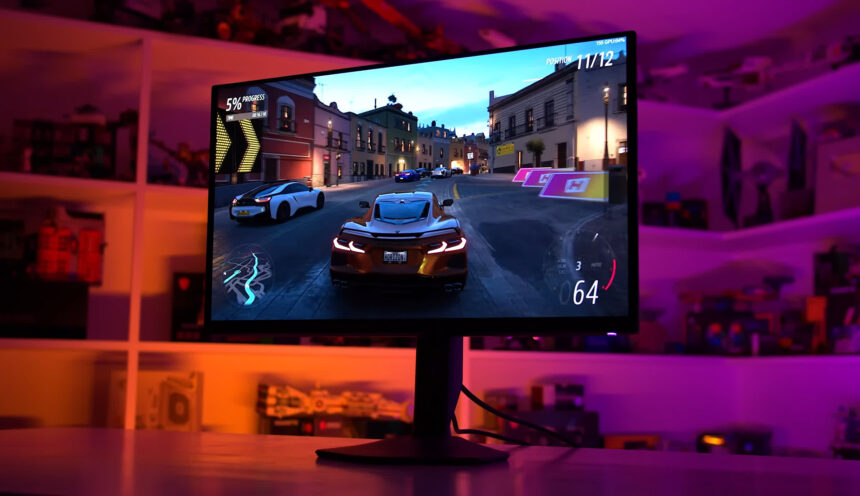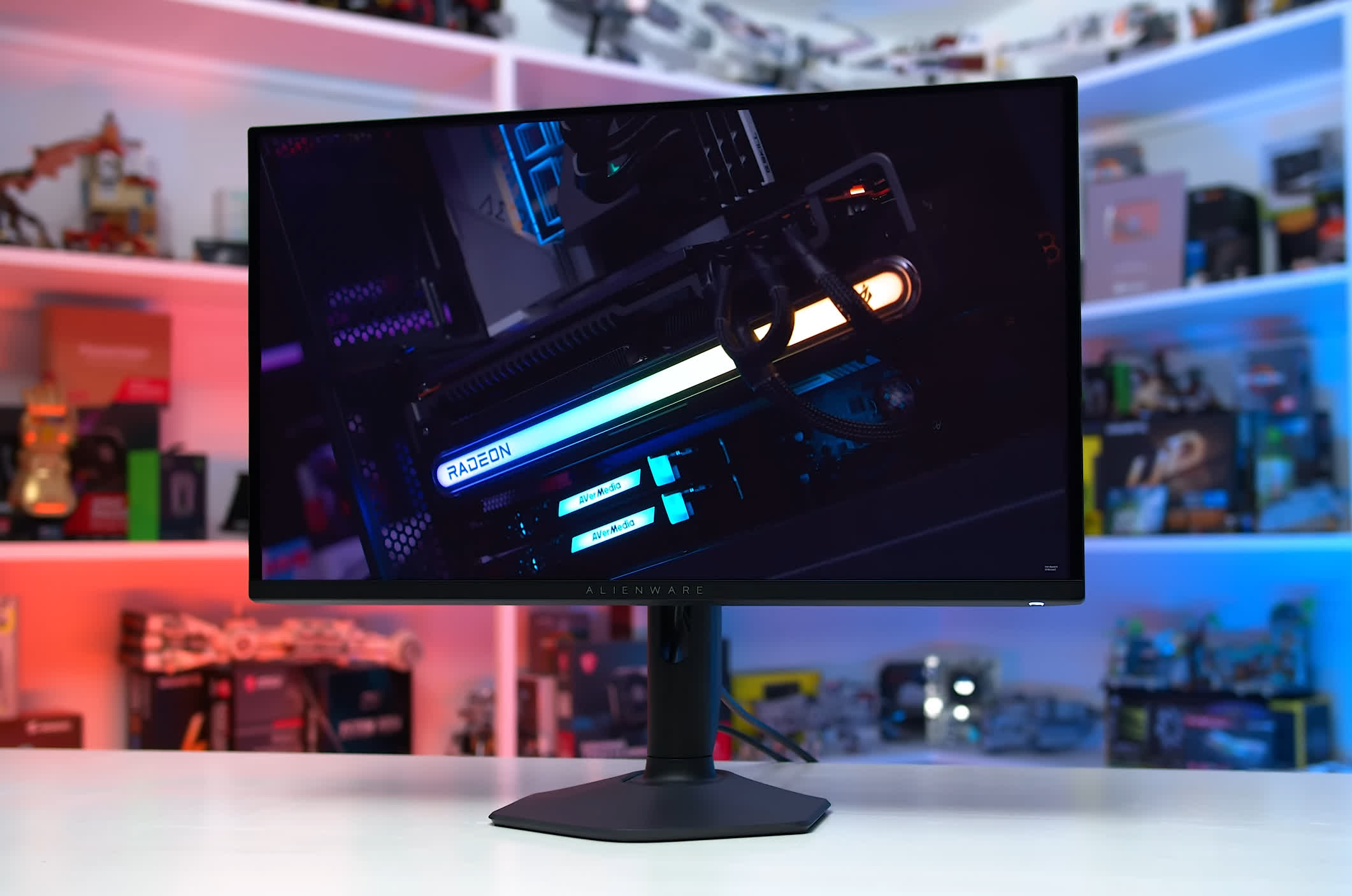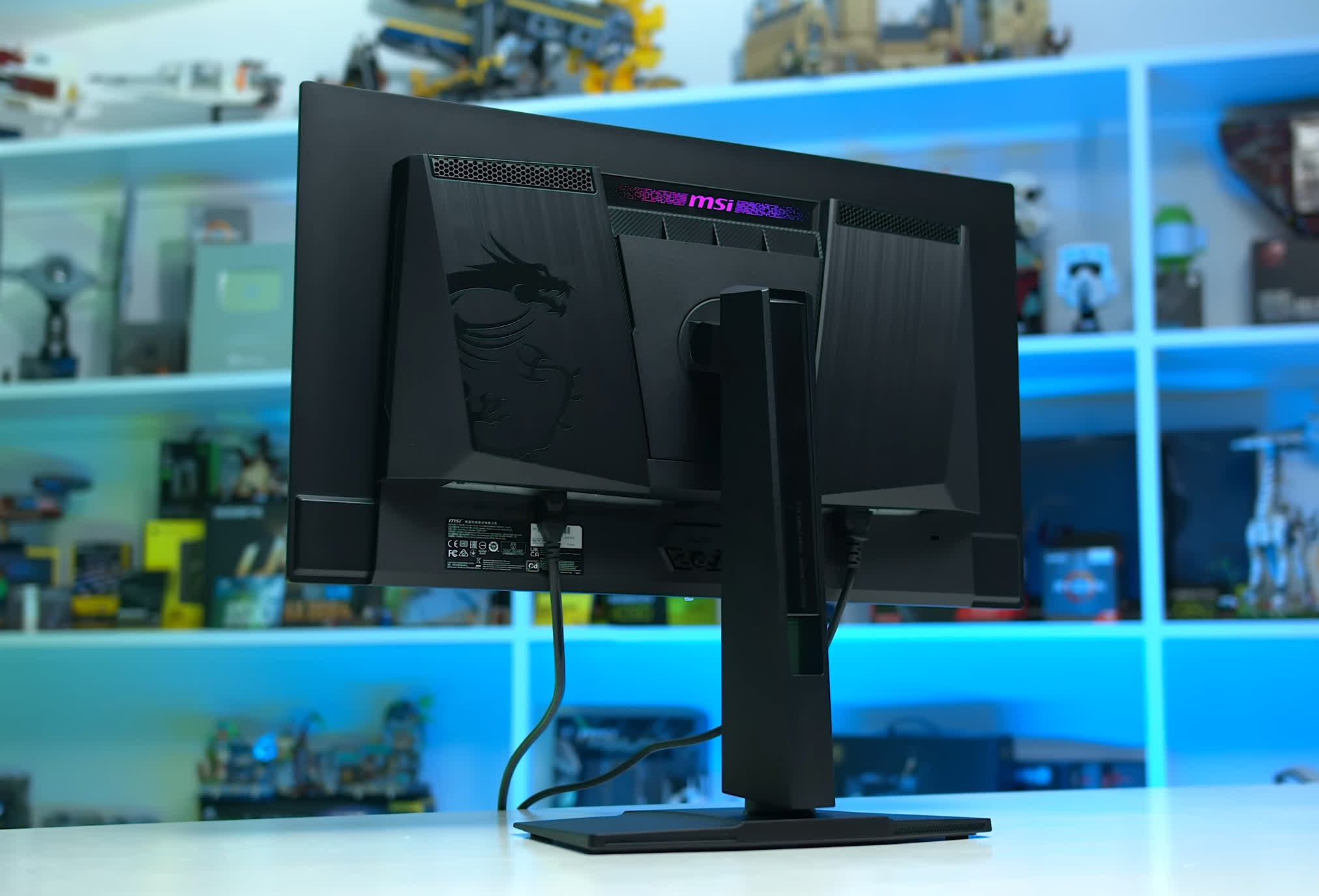If you’re after a premium 1440p monitor with a high refresh rate, we think it’s hard to go past one of the latest 360Hz QD-OLED offerings. Not only do these monitors offer elite motion clarity thanks to the combination of a high refresh rate and fast response times, but they’re also generally excellent displays for a variety of gaming needs – including HDR gaming.
So far, we’ve tested two 27-inch 1440p 360Hz QD-OLED gaming monitors, the MSI MPG 271QRX and the Dell Alienware AW2725DF. Both of these monitors are remarkably similar in their overall performance, so depending on pricing and availability in your region, we’re recommending both of them.
Because these are both OLED monitors, you get all the usual benefits of elite response times and per-pixel control. These are super-fast monitors with excellent zero-level blacks, per-pixel local dimming that allows HDR content to look fantastic, and brightness reaching around 1,000 nits peak. Both the MSI and Dell Alienware variants offer excellent calibration, great color quality, and three-year burn-in warranties.
Alienware AW2725DF
The reason why we’re recommending a 360Hz QD-OLED, in particular, is the higher refresh rate of 360Hz, compared to 240Hz for last year’s WOLED alternatives, which leads to better motion clarity, similar to that of a 500Hz LCD.
This leads to the ultimate experience for competitive gamers who want speed but don’t want to sacrifice adaptive sync, viewing angles, or resolution. And on top of that, it ends up being a highly versatile display because of its strong HDR capabilities, ideal for single-player gamers as well. So, no matter the type of gaming you want to do, these 360Hz QD-OLEDs offer an excellent experience.
The other main advantages of going QD-OLED are its superior brightness in HDR mode, better subpixel structure that leads to clearer text, and its glossy screen coating. The coating is a personal preference thing, though; glossy can look better in darker usage environments, but the panel structure of QD-OLED reflects a lot of ambient light in brighter environments, which puts it at a disadvantage compared to matte WOLED screens.
When it comes to choosing between the MSI and Dell variants, the main differences are as follows. The MSI model gets slightly brighter, has proper HDMI 2.1, and packs a USB-C input with power delivery and a KVM switch. The Dell model is better calibrated, has a nicer design in our opinion, and nails HDR/SDR switching. The vast majority of performance characteristics are identical or near-identical between the two, as they both use the same QD-OLED panel, so it’s a toss-up in most situations.
MSI MPG 271QRX
What we would do is get whichever of the two is cheaper in your region. In most cases, that will typically be the MSI variant, which has an $800 MSRP, compared to $900 for the Alienware. Outside the US, the Alienware model is typically cheaper and will be the better buy.
High-Refresh, But Cheaper
Also worth considering are older 27-inch 1440p 240Hz WOLED monitors, which aren’t quite as good as the latest 360Hz QD-OLEDs but are often quite a bit cheaper. The standout option here is usually the AOC Agon Pro AG276QZD, which throughout most of this year has been priced at or below $700. It performs pretty well and of course offers the benefits of OLED, so it’s worth checking out if you can’t quite justify spending $800 or $900 and don’t need the 360Hz refresh rate.
And lastly, while 360Hz QD-OLED is an excellent choice for high-performance competitive gaming, the absolute best of the best motion clarity is still only achievable with an LCD that features backlight strobing.
The Asus ROG Swift PG27AQN is difficult to recommend for regular buyers due to its high price tag and lack of HDR functionality, but it does have excellent ULMB 2 backlight strobing that even outstrips 360Hz QD-OLED in motion. If you specifically need the best clarity and are willing to sacrifice other functionality, it’s worth a look, and these days at $750, it’s not quite as pricey as it once was.



